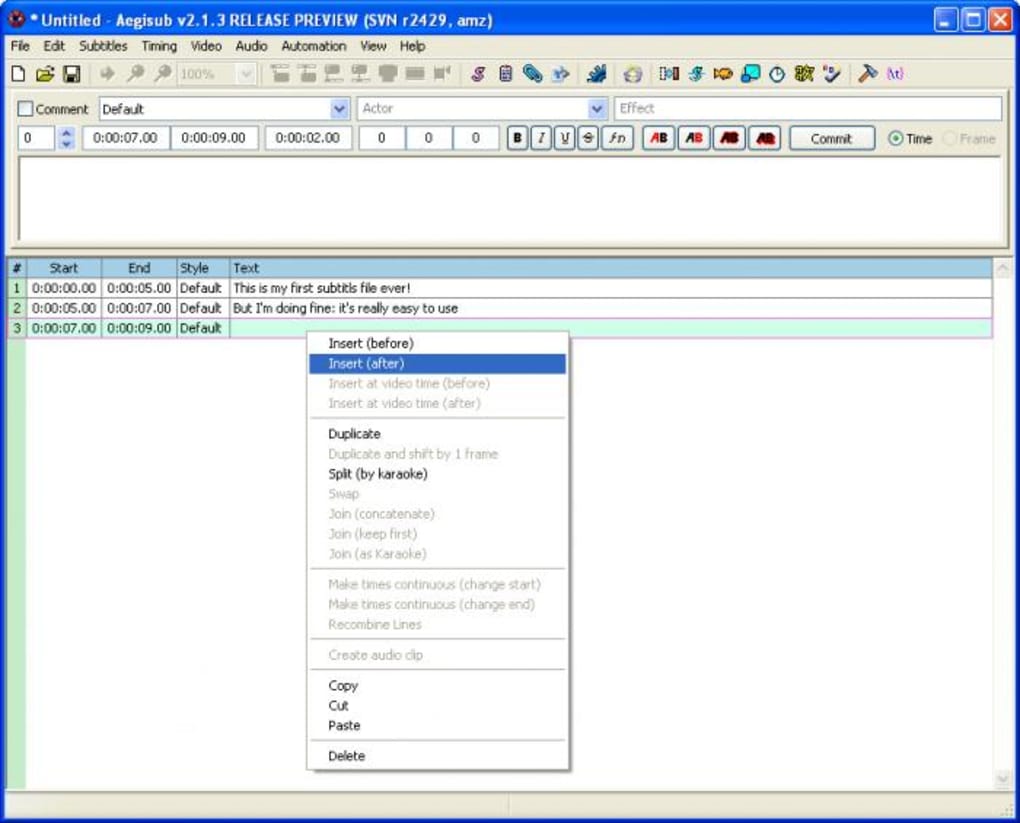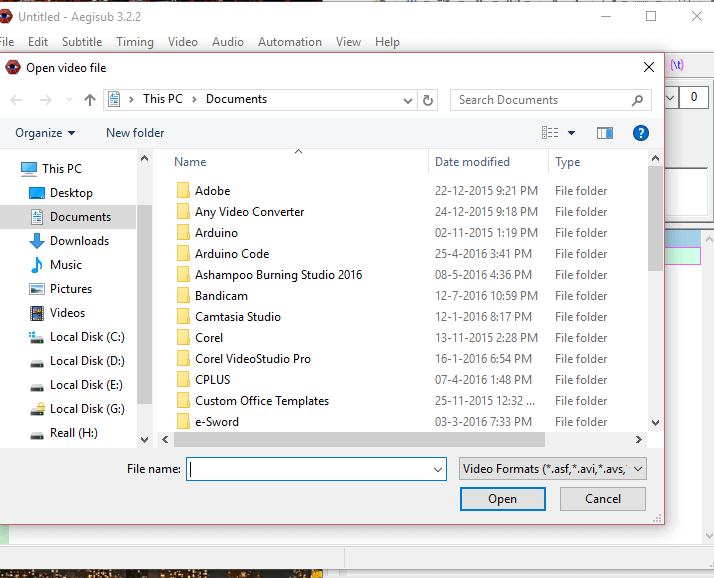
- #Add multiple videos to aegisub mp4
- #Add multiple videos to aegisub install
- #Add multiple videos to aegisub manual
- #Add multiple videos to aegisub plus
There are a few quirks however for example libavformat is not used for Matroska (.mkv. Under Unix or Unix-like systems (including but not limited to *BSD, GNU/Linux, and MacOS X) your video provider is ffmpeg, which means Aegisub will attempt to load the video using, well, ffmpeg, which should mean that anything supported by ffmpeg is supported see its documentation for details. May help with some really oddball files, but is usually not recommended. If you change the video provider to dshow, Aegisub will try to interface directly with DirectShow to open the file.
#Add multiple videos to aegisub mp4
Pretty much any standards-compliant MP4.Most stuff stored in Matroska (except maybe some really oddball V_MS/VFW/FOURCC streams).XviD/DivX/other MPEG4 ASP codecs in AVI.
#Add multiple videos to aegisub install
Formats more or less guaranteed to work in a stable fashion with the default install include but is not limited to: You may however run into trouble with some of the more unusual formats and just because you CAN load something it doesn't mean it's a good idea to use it.
#Add multiple videos to aegisub plus
You can also put them directly in your Avisynth plugins folder to get them autoloaded.Īnyway, what does all this mean to you as the average user? It means Aegisub can in theory open ANY video format as long as you are capable of playing it in Windows Media Player (or render it in GraphEdit), plus some that aren't playable there (such as. Do not use it if you can avoid it.Īegisub will look for Avisynth plugins in its ?data directory (generally the folder where Aegisub.exe is, on Windows). Warning: DSS is known to have problems with frame-accurate seeking.


Basically the same as DSS2, with the exception that it doesn't convert VFR to CFR. DirectShowSource() - Uses DirectShowSource() (which ships with Avisynth) to try to load the file.Usually this is what you want and expect but if you're doing proper VFR subtitles, it isn't. Do note that DSS2 converts variable framerate files to constant. As a rule of thumb, if it's playable in Windows Media Player, Aegisub should be able to load it. Theoretically any file renderable by DirectShow should be supported, but since you are at the mercy of third-party splitters and decoders, your mileage may vary. That will in turn try to use your computer's DirectShow environment to open the file. DSS2() - Tries to find, load and use Haali's DirectShowSource2 plugin (comes with the Haali Media Splitter package and with the CCCP the Avisynth plugin is avss.dll, you need to manually put it somewhere where Aegisub or Avisynth can find it, see below).Note that for VFR videos that are not in the Matroska (MKV) container, you will have to extract and load timecodes yourself or subtitle synchronization will be off! See the section about VFR below. If Aegisub can't find it or it returns an error, falls back on DSS2() or if that isn't available, DirectShowSource().

#Add multiple videos to aegisub manual
ffmpegSource() - Tries to use Myrsloik's ffmpegsource plugin (comes with the default Aegisub install) to try to load the file see its manual for information on what formats and codecs are supported and what problems they may suffer from.Tries to use neuron2's DGDecode to open the file if Aegisub can't find or load that it'll try the old mpeg2dec3.dll instead if that too fails, returns an error. d2v files (DVD2AVI project files otherwise known as indexed. If it fails, Aegisub will try ffmpegSource() instead, if that fails try DSS2(), and if that too fails try DirectShowSource() (see below). Requires a working Video for Windows (VfW) decoder to open the video. AviSource() - Avisynth builtin function.Used to load Avisynth scripts, never used for anything else. There are currently no less than six Avisynth functions it can try: On Windows, your video provider is Avisynth by default, which in practice means Aegisub will try its best to load your video in the most reliable way possible. To use a dummy (mockup, blank) video, press Use dummy video.

What video files you can open depends on your video provider. To load a video file, go to the Video menu and press Open video file. 5.1 Image stretching and subtitle rendering.3.1 Loading and saving of keyframe data.


 0 kommentar(er)
0 kommentar(er)
